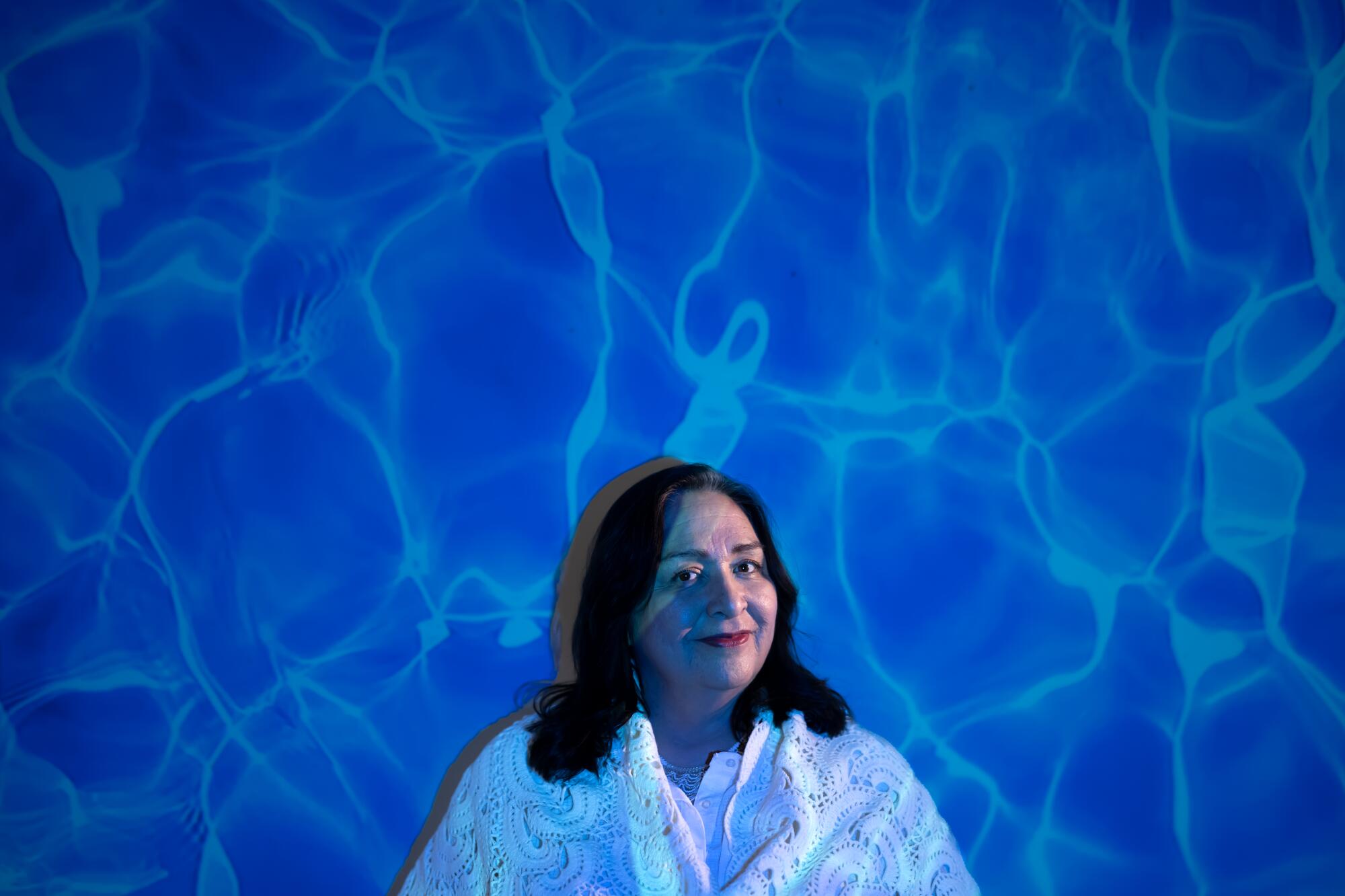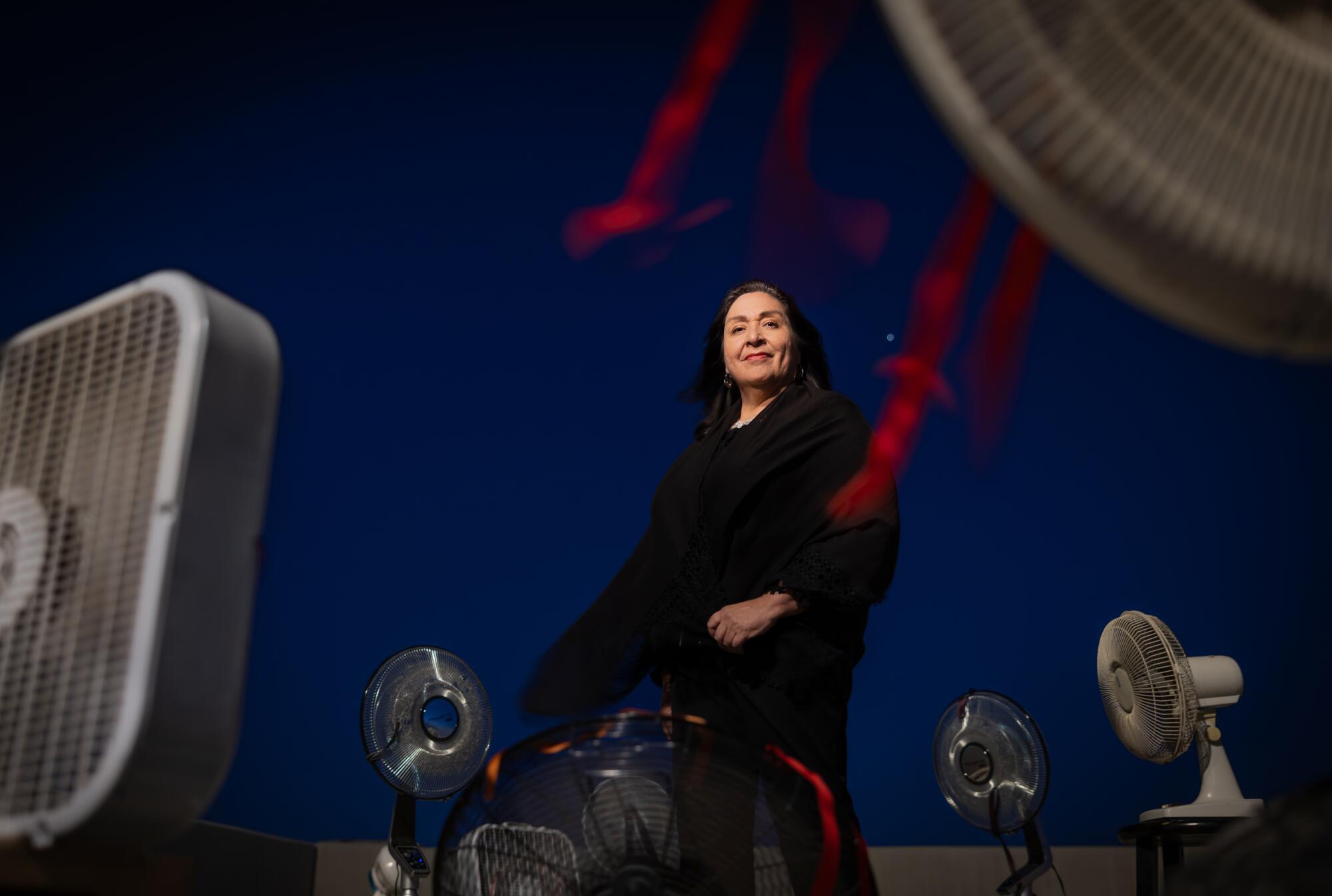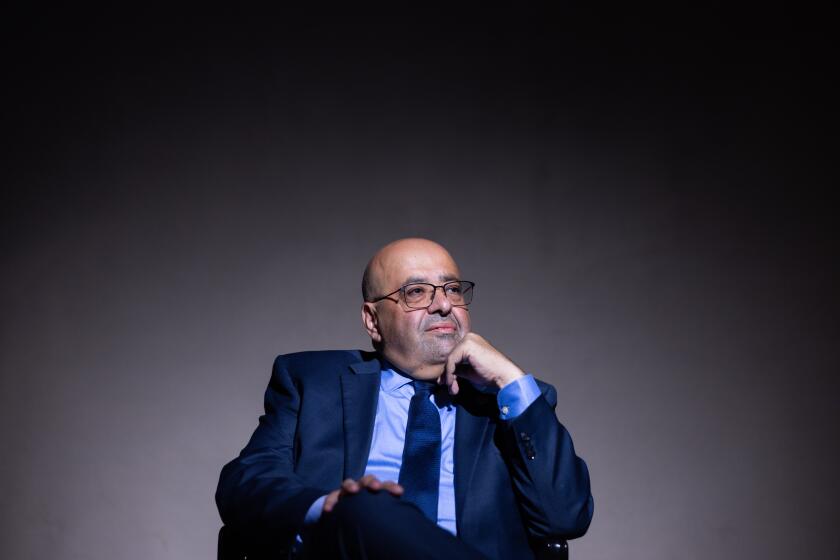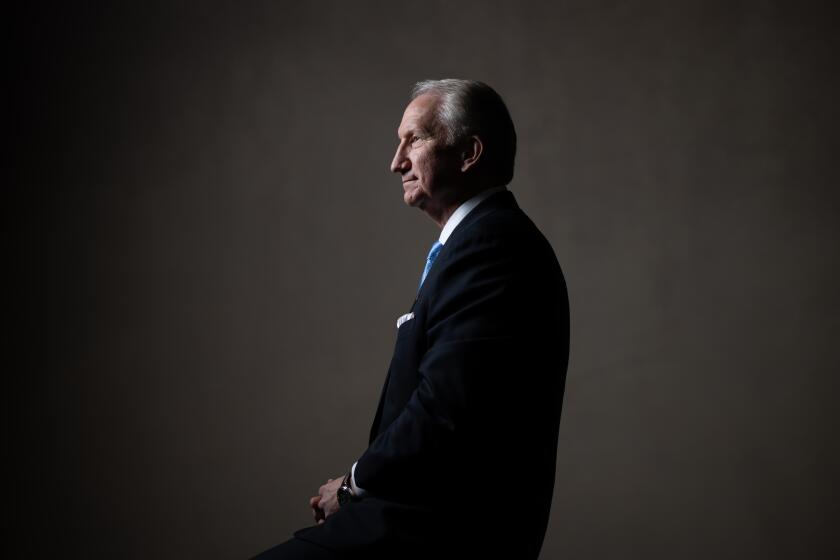
- Share via
Marta Segura knows it can be hard to think of heat as an emergency in Los Angeles, either because you’ve got the air conditioner blasting and a cold drink in your hand, or because you don’t have enough money for food, let alone the electricity bill.
But she also knows that of all the natural disasters whipped up by a warming world, heat — the one she is tasked with confronting — has claimed more lives than any other climate-related cause.
Discover the changemakers who are shaping every cultural corner of Los Angeles. L.A. Influential brings you the moguls, politicians, artists and others telling the story of a city constantly in flux.
Half a million people around the world die every year from illnesses linked to heat. But while hurricanes and wildfires claim their dead almost immediately, heat rarely takes credit for its work. Consistently high temperatures can accelerate deaths that are ultimately attributed to other causes: a heart attack, a runaway asthma attack, an overdose.
Nearly 4,000 Californians died as a result of excess temperatures between 2010 and 2019. And the summers are only getting hotter.
As the chief heat officer for the city of Los Angeles, it is Segura’s job now to make sure we don’t look away — not from those the heat has already claimed, and not from the threat that is coming for the rest of us.
‘That deep connection with the communities that are impacted that she has is something that I have admired.’
— Jane Gilbert, chief heat officer for Florida’s Miami-Dade County
Segura works almost like the heat itself, taking up whatever space is available and subtly changing things.
Her position was created in June 2022 in response to a dramatic increase in extreme heat events. At the time she was director of the city’s Climate Emergency Mobilization Office, a job she continues to hold.
The climate office has six employees and an annual budget of $1 million — less than what the city spends on street sweeping supplies. But the way Segura sees it, things don’t need to have her office’s imprimatur to count as solutions.
Adel Hagekhalil leads the giant water agency that supplies 19 million Californians. He is focusing on transforming water management to adapt to climate change.
People throughout city and county government — not to mention at local nonprofits and universities — are working to make life tolerable in a hotter Los Angeles. Segura says her role as chief heat officer is to find them and ensure their collective efforts are focused on getting services to the people and places that need them most.
Los Angeles is the third city in the U.S. to appoint a CHO, after Phoenix and Miami. What makes Segura’s approach to the job stand out, her counterparts say, is the depth of her connection to communities most affected by heat.
“She’s taken that to another level,” said Jane Gilbert, chief heat officer for Florida’s Miami-Dade County. “That deep connection with the communities that are impacted that she has is something that I have admired.”
Segura, 60, recognizes her own family in those she serves. She grew up in San Jose, the second of three daughters whose parents emigrated from Mexico.

Both of her parents experienced heat-related injuries at work. Her mother once fainted at a Del Monte cannery when denied water during a hot shift; her father suffered dehydration several times as a farmworker under the bracero program.
“My mom and dad had many work-related accidents combined, and they had stories of those who didn’t make it,” Segura said. “That had a profound impact on me.”
When Segura was 13, the family was evicted from a rental home hemmed in by freeways to make way for more construction. In their next home, they were sprayed by the pesticide malathion.
She carried these experiences with her to UC Santa Barbara, where she intended to major in biology. But an elective course in environmental studies changed everything. It tied it all together: her family’s displacement, their exposure to pollution and pesticides, the undeniable link between an organism’s health and that of its environment.
When COVID-19 decimated the global supply chain, it fell to Port of Los Angeles Executive Director Gene Seroka to untangle an unprecedented disruption.
“It made sense to me. It made total sense,” she recalled thinking. “This is what I want to do for the rest of my life, because this is the problem that I’m trying to solve.”
She graduated with a bachelor’s degree in environmental studies and later got a master’s in public health from UCLA. The lessons of San Jose have stayed with her as well.
The house near Park Mesa Heights that Segura now shares with her husband (and their son when he’s home from UC Berkeley) does not have air conditioning, an absence she attributes to thrift instilled in her by her no-nonsense mother.
When it gets hot, she opens the windows and closes the shades. When it gets really hot, she leaves, either to drop in on one of the city’s cooling centers to check how people are doing, or to a mall, cafe or theater.
A confluence of life events led to Prophet Walker’s reputation for leveraging the power of celebrities, politicians and developers for the poorest Angelenos.
Heat is a health issue, and it’s also an equity one. The ability to pay to modulate one’s environment — with air conditioning, perhaps, or a move to a cooler coastal neighborhood — can make the difference between life and death.
“You can have two communities, literally contiguous ZIP Codes, and one will have three times the rate of the other in terms of excess emergency room visits due to heat,” said Dr. David Eisenman, director of the UCLA Center for Public Health and Disasters. “That’s right in your face.”
Our familiarity with heat is part of what makes it so deadly, Eisenman said.
People “think that they can handle it,” he said. “They don’t really fear it. And it’s going to be a challenge for us to change the culture on it.”

There have always been hot days in Los Angeles. The sun is a selling point for many who choose to live here.
But heat waves — extreme heat that lasts for days and doesn’t give a body the chance to recover — are longer, hotter and more frequent than they were 50 or even 20 years ago, and they’re projected to become more so as the mid-century mark approaches.
The hotter it gets, the harder your body has to work to maintain an internal temperature of 98.6 degrees.
When the temperature heats up, your heart pumps harder. The capillaries beneath the surface of your skin widen to accommodate the extra blood flowing through them, and your skin turns pinker and then redder as it rushes beneath the surface.
Then you start sweating, the body’s attempt to cool itself through evaporation. As you lose that water, your blood pressure drops, a shift that can make you dizzy, nauseous and confused. If you lose too much water, you become dehydrated, making those symptoms even worse.
The hotter it gets, the harder your body has to work to maintain an internal temperature of 98.6 degrees.
By now your muscles cramp and fatigue easily due to loss of water and electrolytes. This discomfort is a warning sign to hydrate and seek shelter.
If you don’t — or can’t — voluntarily take a break, your body will take one for you. Heatstroke begins around a body temperature of 104. Deprived of necessary blood and oxygen, organs begin to shut down. Even if you do get help at this point — which someone will have to step in and provide for you, since you’re probably too disoriented to seek it yourself — stress and inflammation may have already done permanent damage to your cells.
“We talk a lot about prevention, because once you get to that point, it is a point of no return for some people,” said Dr. Jan Shoenberger, an emergency medicine professor at USC’s Keck School of Medicine and chief of service in the emergency medicine department at Los Angeles General Medical Center.
At an internal temperature of 107 degrees, the membranes around your cells disintegrate. The mortality rate for heatstroke can be as high as 65%.
“When I teach it to medical students, I say: Think of the body melting internally,” Shoenberger said.

In August, with a heat wave looming, Segura packed the trunk of a car with paper fans emblazoned with the city’s 311 services line and tips for staying safe in the heat.
She was delivering them to organizations assisting people most vulnerable to heat-induced illnesses. The trip would let her see for herself what resources they still needed.
Her first stop was the Community ReFresh Spot on Skid Row, a respite site open 24-7 with phone chargers, showers, bathrooms and cooling fans. Segura spoke with staff and then moved among people waiting their turn for a shower.
“We’re having a heat wave this weekend,” she said, handing a fan to a thin woman in striped leg warmers. She spoke with a man who worried aloud about leaving his cat alone in the heat. (Stephany Campos of Homeless Health Care Los Angeles, one of the organizations that runs the site, stepped forward to say that pets were welcome.)
Segura reminded people to drink water — it could be had for free at the center — and that they could cool down in any of the city’s open libraries or community centers.
It was a lovely late summer afternoon, the kind where it’s hard to imagine such a thing as too much sunshine. Many of the people she spoke with were occupied by other worries.
A tall, solidly-built man stood up as she approached. She offered him a fan but he declined, saying that he knew he couldn’t hang on to it and that he didn’t want to litter. He asked how hot it might get, and nodded politely when she told him of the high 90s forecast.
Few are the corners of L.A. that don’t bear the imprint of Studio-MLA, the landscape architecture firm founded by the energetic Mia Lehrer three decades ago.
Many things troubled him, he said after Segura stepped away: housing, his mental health, the harm that might come to him on the streets. But not the temperature.
“It’s California,” he said, gesturing to the cloudless sky. “What type of weather we gonna have out here?”
Back in her car, Segura took a deep breath. It is her habit to look for opportunities, the footholds that can support the next step. The site already had a team of knowledgeable staff, she mused out loud — maybe she could find a way to get them more training on heat illnesses, or money for a community health educator.
It would be too late for the coming heat wave. But the grim reality was that there would doubtlessly be another.
“We have to do more,” she said. “Not one moment should be wasted.”






